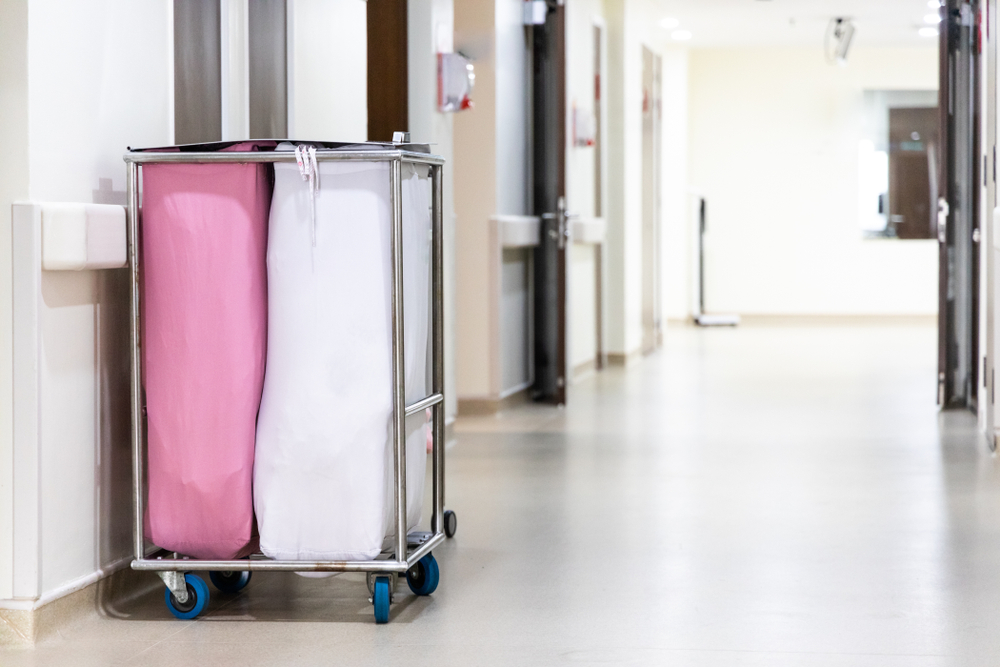Company Blog
Critical Guidelines for Handling Contaminated Laundry

Hospital linens are easily some of the most challenging items to wash and maintain. The foremost reason for this is the possibility of these items being contaminated with bloodborne pathogens from blood and other bodily fluids (e.g. pleural fluids, amniotic fluid, etc).
Medical linens serve as ideal vessels for dangerous diseases like HIV and Hepatitis B and C viruses, among others, making the handling and laundering process all the more crucial in preventing cross-contamination and protecting the health and welfare of patients and medical professionals.
Understanding “Contaminated” Laundry
What exactly is “contaminated” laundry? The OSHA simply defines these items as those that have been soiled with blood or other infectious material. This categorization also includes those that may potentially contain sharps like syringe needles.
The importance of this specification lies in its role in the decision-making process of whether the linens in question can be washed or should be disposed of as infectious or red-bag waste. Countless linens have been prematurely thrown away as a result of this confusion, contributing to the billion-dollar problem of linen loss in the healthcare industry.
The OSHA makes it clear that contaminated linens are not considered infectious “waste” and do not belong in the red-bag category. The OSHA also emphasizes the importance of properly handling contaminated laundry to prevent cross-contamination and infecting the personnel handling said laundry.
Guidelines for Handling Contaminated Laundry
What exactly does the OSHA say about how to handle contaminated laundry? Here are their guidelines for quick reference:
- Minimal handling and agitation. Contaminated linens must be handled gently and swiftly as bloodborne pathogens could become airborne and infiltrate air vents and other surfaces.
- Bag properly. These linens must be isolated and bagged right away at the location where they were used. This is especially important for wet, contaminated laundry. Use leak-proof bags that are appropriately labeled.
- Handle and transport bagged contaminated laundry properly. The contained items must be transported in leak-proof bags that have the proper labels and must not be held close to the body or squeezed in case the linens contain improperly discarded sharps that could puncture the bag and/or the handler.
- Wash accordingly. Recommended washing procedures must be observed.
- Employees handling contaminated laundry at any point of the laundry process must wear appropriate PPE. The OSHA has a Bloodborne Pathogens Standard PPE specification designed to provide adequate protection for laundry handlers.
Your Laundry Choices MATTER
In any other industry, it is easy to claim that proper laundry is a matter of taking care of aesthetics and of taking care of linen inventory – which do not come cheaply. In the healthcare setting, however, the choices you make as far as laundry is concerned are more often than not a matter of health and wellness, and a critical part of preserving public health and welfare.
An in-depth understanding of all that is at stake and competence in carrying out appropriate linen services for medical facilities are what separates healthcare-specific linen service providers from every other commercial linen service provider around. They not only ensure that every part of the laundry handling process is safe and hygienic according to the highest industry standards, but they do so with efficiency, preserving your linen inventory and saving you from linen loss.
Get these kinds of medical linen services and more from MEDtegrity!
MEDtegrity is the nation’s largest and most reliable network of HLAC and Hygienically Clean laundry facilities that specialize in the needs of the medical industry. For quality clean and superb infection control, contact MEDtegrity!


